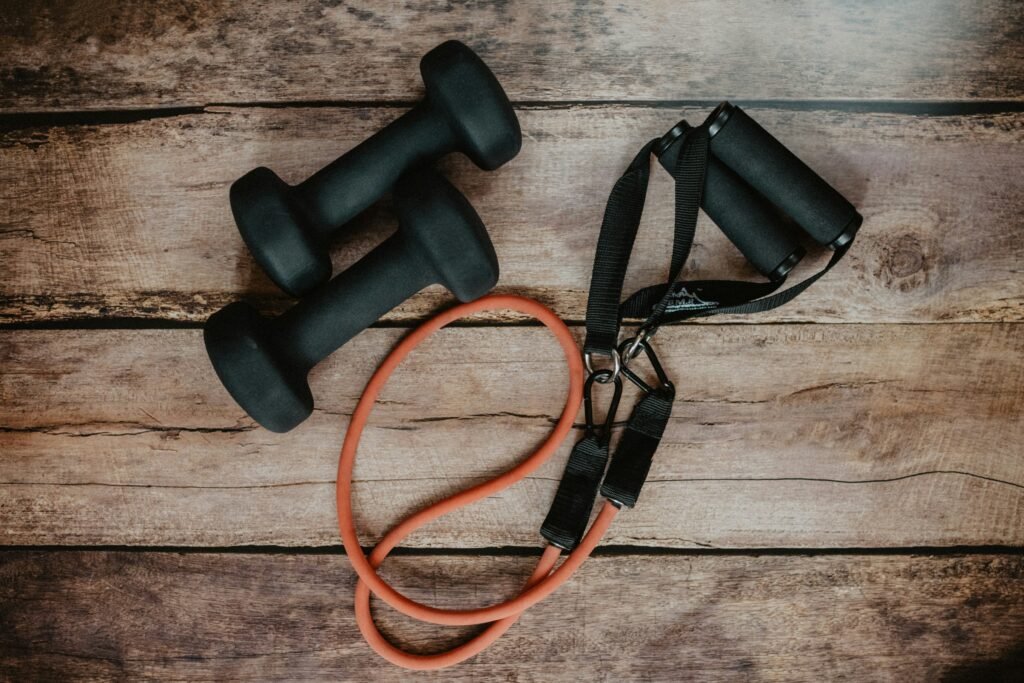How Much Exercise Per Day Do You Really Need?
Determining Your Weekly Exercise Goal
Did you know that the amount of exercise you need per day actually varies depending on your age, gender, overall health, and fitness goals? Let’s break down the general recommendations for different age groups and lifestyles.
Sedentary Adults
For adults who lead sedentary lifestyles, meaning you engage in little to no physical activity throughout the day, it’s recommended to aim for at least 150 minutes of moderate-intensity aerobic exercise per week. This can be broken down into 30 minutes per day, five days a week. Examples of moderate-intensity activities include brisk walking, leisurely biking, or light gardening.
Active Adults
If you’re already an active adult who engages in regular physical activity, you might need to up your game to achieve optimal health and fitness. Experts recommend increasing your weekly moderate-intensity aerobic exercise to 300 minutes, or 60 minutes per day for five days a week. You can also mix in some high-intensity workouts like running, swimming, or aerobics classes for added benefits.
Why Exercise is Important
Understanding the importance of exercise can motivate you to make it a priority in your daily routine. Let’s explore some of the key reasons why physical activity is crucial for your overall well-being.

Physical Health Benefits
Engaging in regular exercise can help improve your cardiovascular health, increase muscle strength, boost your metabolism, and enhance your immune system. It can also reduce your risk of chronic diseases like heart disease, diabetes, and certain types of cancer. By staying active, you’re investing in a healthier and longer life.
Mental Health Benefits
Exercise isn’t just good for your body—it’s also beneficial for your mental health. Physical activity releases endorphins, which are natural mood lifters that can help reduce feelings of anxiety, stress, and depression. Regular exercise can improve your sleep quality, enhance your cognitive function, and boost your overall mood. It’s a powerful tool for maintaining a positive mindset and combating the challenges of daily life.
Different Types of Exercise
When it comes to achieving your fitness goals, it’s essential to incorporate a variety of exercises into your routine. Let’s explore the different types of exercise and how they can benefit your overall health and well-being.

Aerobic Exercise
Aerobic exercise, also known as cardiovascular exercise, involves activities that elevate your heart rate and improve your endurance. Examples include running, cycling, swimming, and dancing. Aerobic exercise is excellent for improving your cardiovascular fitness, burning calories, and boosting your energy levels. It’s a fundamental component of a well-rounded fitness program.
Strength Training
Strength training involves lifting weights, using resistance bands, or performing bodyweight exercises to build muscle strength and endurance. It’s essential for maintaining bone density, increasing metabolism, and toning your body. Strength training can also help prevent injuries, improve posture, and enhance athletic performance. Incorporating strength training into your routine can lead to significant improvements in your overall strength and fitness levels.

Flexibility and Balance Exercises
Flexibility and balance exercises focus on improving your mobility, flexibility, and stability. Examples include yoga, Pilates, and Tai Chi. These types of exercises can help prevent injuries, reduce muscle stiffness, and enhance your posture. Improving your flexibility and balance is crucial for maintaining functional movement and preventing falls, especially as you age.
Tips for Staying Motivated
Maintaining an exercise routine can be challenging, but with the right mindset and strategies, you can stay motivated to achieve your fitness goals. Let’s explore some helpful tips to keep you on track and make exercise a sustainable habit in your daily life.
Set Realistic Goals
Setting realistic and achievable fitness goals is essential for staying motivated. Whether you aim to run a 5K race, lose a certain amount of weight, or improve your strength, breaking down your goals into smaller milestones can make them more manageable and rewarding. Celebrate your progress along the way and adjust your goals as needed to keep yourself engaged and motivated.
Find Activities You Enjoy
Exercise shouldn’t feel like a chore—it should be something you look forward to each day. Experiment with different types of workouts to find activities that you genuinely enjoy, whether it’s dancing, hiking, or kickboxing. When you engage in activities that bring you joy, you’re more likely to stick with them long term and make exercise a regular part of your lifestyle.
Stay Accountable
Having a workout buddy or joining a fitness class can help you stay accountable and motivated to exercise regularly. You can share your progress, celebrate achievements together, and provide each other with encouragement and support. Accountability partners can keep you on track when you’re feeling demotivated and make exercise more fun and social.
Balancing Rest and Recovery
While regular exercise is essential for your health and fitness, it’s equally important to prioritize rest and recovery to avoid burnout and prevent injuries. Let’s delve into the significance of rest days and recovery strategies to optimize your exercise routine.
Importance of Rest Days
Rest days are an essential component of any workout plan, as they allow your muscles to repair and rebuild after intense physical activity. Skipping rest days can lead to overtraining, muscle fatigue, and increased risk of injuries. Listen to your body and schedule regular rest days to give your muscles time to recover and grow stronger.
Recovery Strategies
In addition to rest days, incorporating recovery strategies into your routine can help enhance your performance and reduce muscle soreness. Some effective recovery techniques include foam rolling, stretching, massage therapy, and proper nutrition. These strategies can improve circulation, alleviate muscle tension, and support muscle recovery after intense workouts. Prioritize recovery to ensure that you’re giving your body the care and attention it needs to perform at its best.
Consulting with Fitness Professionals
If you’re unsure about how much exercise you need per day or how to design an effective workout plan, consider consulting with fitness professionals to receive personalized guidance and support. Let’s explore the benefits of working with fitness experts to help you achieve your fitness goals.
Personal Trainers
Hiring a personal trainer can be beneficial if you’re looking for personalized workout routines, expert guidance on exercise techniques, and accountability to stay on track with your fitness goals. A personal trainer can tailor workouts to your specific needs and goals, provide motivation and support, and ensure that you’re exercising safely and effectively. They can help you push past plateaus, set new challenges, and make progress towards your desired outcomes.
Registered Dietitians
Nutrition plays a crucial role in supporting your exercise routine and overall health. Consulting with a registered dietitian can provide you with valuable insights into optimizing your nutrition for fitness performance, weight management, and overall well-being. A dietitian can help you create a balanced meal plan, address specific dietary concerns, and make informed choices about food intake to fuel your workouts and recovery effectively. By combining exercise and nutrition strategies, you can maximize your results and achieve your fitness goals more efficiently.
Final Thoughts
Finding the right balance of exercise, rest, and recovery is key to achieving optimal health and fitness. By understanding your individual needs, setting realistic goals, and staying motivated, you can create a sustainable exercise routine that supports your overall well-being. Remember that consistency is key, and every step you take towards a healthier and more active lifestyle is a step in the right direction. Prioritize your health, listen to your body, and enjoy the journey towards becoming the best version of yourself through regular exercise and physical activity.